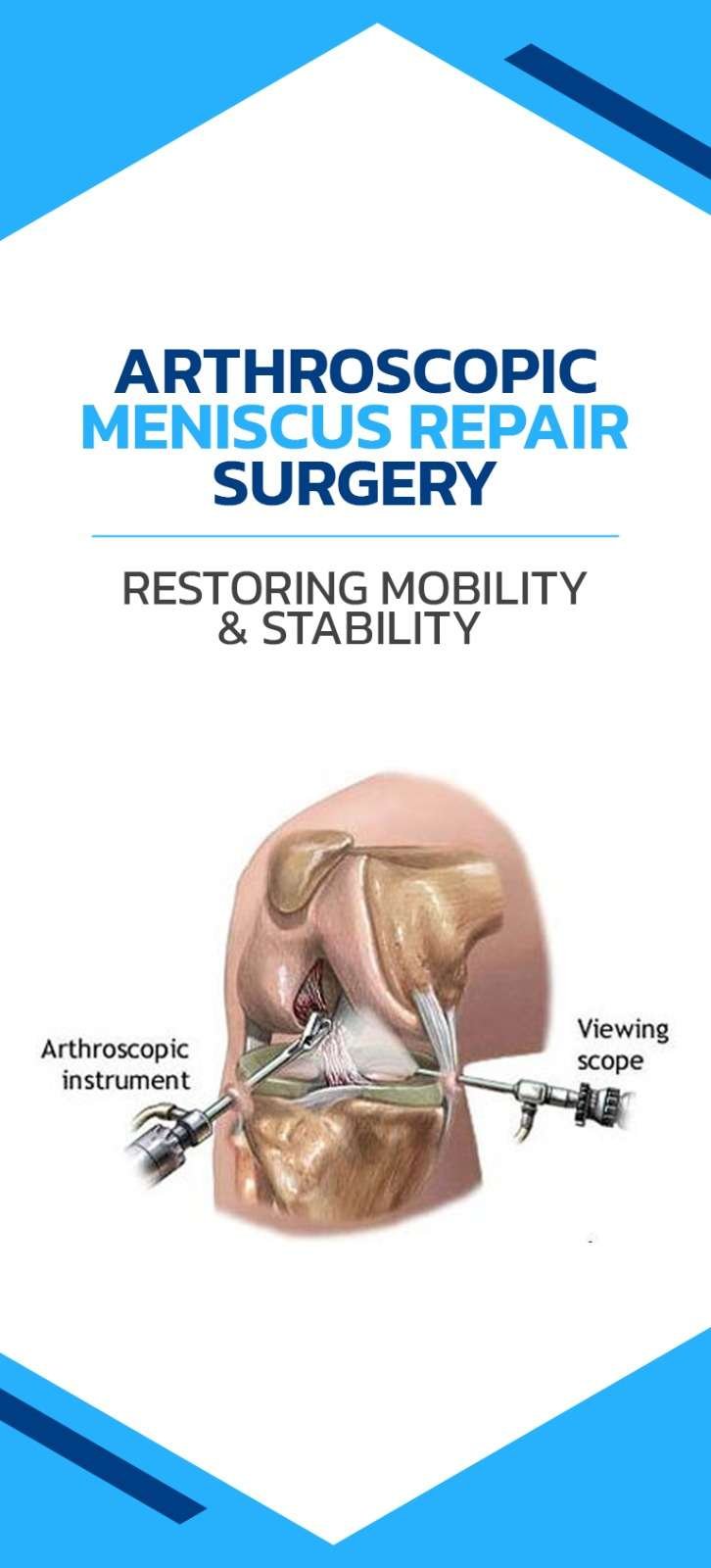

The meniscus is a wedge-shaped cartilage structure located between the thighbone (femur) and the shinbone (tibia) within the knee joint. It serves as a cushion, shock absorber, and stabilizer, distributing weight evenly across the joint and enhancing its stability and smooth movement. In this blog we will understand about what is Mencius tear and how can it be repair through Arthosocpy ?

Meniscus tear surgery is a surgical procedure aimed at repairing tears in the meniscus. These tears can occur due to traumatic injuries, such as sudden twisting or pivoting motions, or degenerative changes associated with aging or repetitive stress on the knee joint. Meniscus repair surgery aims to preserve the meniscus tissue whenever possible, promoting healing and restoring normal knee function.

Arthroscopic meniscus repair is a valuable treatment option for individuals with meniscus tears, offering numerous benefits over traditional open surgery.
Dr. Bakul Arora at Arora Clinic in Thane provides expert orthopedic care. With a focus on knee replacement and robotic knee surgery, Dr. Bakul Arora ensures top-notch treatment for all joint pain concerns.
Arora Clinic, Shop No. 13, Block 2, Emerald Plaza, Hiranandani Meadows, Glady Alvares Road, Behind Standard Chartered Bank, Thane west – 400610
Contact: +91 93260 04795
Managed By Hopeland Healthcare @ All Rights Reserved 2023.
WhatsApp us